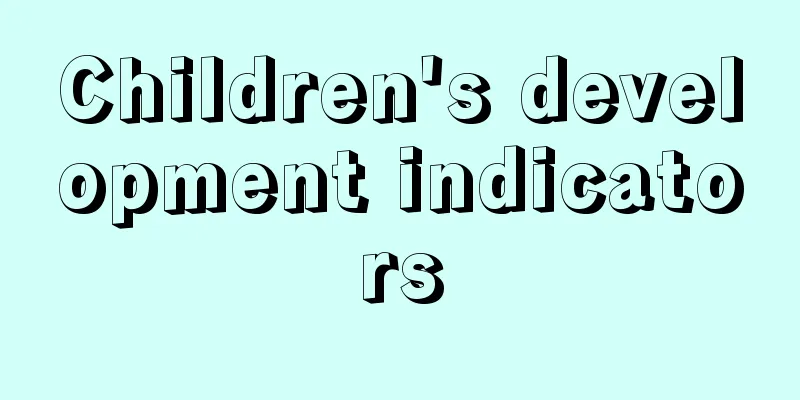Children's development indicators

|
There should be different indicators for early childhood development for babies of different ages. Mastering the most effective sleep time can not only improve the sleep quality of our babies, but also promote the normal, healthy and vigorous growth of babies. Therefore, it is very important to master early childhood development indicators. This is also conducive to the better and healthier development of our babies. Early childhood development indicators involve many aspects of the problem. Maybe everyone does not know much about early childhood development indicators. Let us learn about the relevant situation together. Indicator rules: 1. Height (length) refers to the sum of the lengths of the head, torso and lower limbs. The proportions of the three are different in different stages of the baby. The younger you are, the larger the ratio of your head to your upper body. As you age, your lower body will grow faster than your upper body. The average length of a baby at birth is about 50cm. The height (length) grows fastest in the first year, with an average monthly increase of 2.5cm from 1-6 months, and an average monthly increase of 1.5cm from 7-12 months. At one year old, the baby is about 25cm taller than at birth, which is 1.5 times the height at birth. In the second year after birth, the baby's height growth rate begins to slow down, only increasing by 10-12 cm throughout the year. From the age of 2 until before puberty, the baby's height increases by an average of 6-7cm each year. 2-7 years old baby height calculation formula = age × 5 + 75cm Tips When measuring your baby's height (length), take off his shoes, hat and socks. It is best to measure your height (length) in the morning so that the data obtained will be more accurate. Small and uncooperative babies can be measured in a lying position. When measuring, make sure your knees are straight and someone has their head fixed with hands. Boys of the same age have a slight advantage in height (length) over girls. Monoparticles, such as bottle, bath, ball, drink water. 2. The normal full-term baby weighs about 2.2kg-4.3kg at birth. [1] In the first 3 months, the baby's weight gain is 0.18kg-0.2kg per week, 0.15kg-0.18kg per week at 4-6 months, 0.09kg-0.12kg per week at 6-9 months, and 0.06kg-0.09kg per week at 9-12 months. Calculated by weight gain multiples, the baby's weight at 6 months is twice that at birth, about 3 times at 1 year old, about 4 times at 2 years old, and about 4.6 times at 3 years old. In the second year after birth, the baby's weight increases by an average of 2.5kg-3kg. After the age of 2, the average annual growth rate is about 2 kg until puberty. The above content introduces us to the relevant issues of early childhood development indicators. Through these contents, we should have a deeper understanding of early childhood development indicators. Each of us may be a father or mother of a child. Mastering some knowledge in this area will be more conducive to the growth of children. I hope the above content is helpful to everyone. |
<<: Treatment for a two-year-old baby who loves to sweat while sleeping
>>: How to treat my son's sweating while sleeping
Recommend
What to do if your child is allergic to medicine and it itches
Children's physical health is very important,...
How to treat osteomyelitis in children
Osteomyelitis in children needs to attract the sp...
Why do children yawn all the time?
We all yawn at normal times, and children do the ...
What to do if your child is too delicate
Children are the center of a family and everyone ...
The child fell and got a bump on the back of his head. Should I apply cold or hot compress?
We all know that children are prone to falling wh...
Will baby strawberry hemangiomas disappear?
Hemangioma is a common disease in infants. Many p...
Will children become stupid after drinking a little red wine?
Red wine is a common thing in daily life. Drinkin...
Normal neonatal breathing and consequences
With the development of the times and the impleme...
What are the benefits of children doing outdoor sports regularly?
There are not many children who stay at home. Mos...
Swollen inguinal lymph nodes in baby
When there is a problem with the lymph nodes, the...
What to do if your seven-month-old baby is bitten by a mosquito
When babies are young, they are just beginning to...
Check the trace elements of children
Trace elements are essential to our human body, a...
The symptoms of calcium deficiency in baby's hair, parents should understand these knowledge
As we all know, calcium is very important for chi...
Red blood clots in newborn's eyes
If there are red blood clots in the eyes of a new...
How tall is a one year old baby?
Babies over one year old are in the golden stage ...









